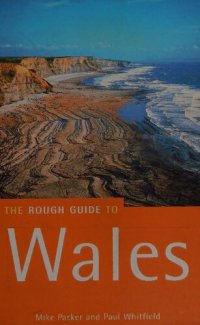
Ebook: The Rough Guide to Wales
Author: Mike Parker Paul Whitfield
- Series: Rough Guide Travel Guides
- Year: 2000
- Publisher: Rough Guides
- Edition: 3
- Language: English
- pdf
Perched on the rocky fringe of western Europe, Wales often gets short shrift in comparison to its Celtic cousins of Ireland and Scotland. Neither so internationally renowned nor so romantically perceived, the country is usually defined if it is known at all by its male voice choirs and tightly-packed pit villages. But there's far more to the place than the hackneyed stereotypes, and at its best, Wales is the most beguiling part of the British Isles. Even its comparative anonymity serves it well: where the tourist dollar has swept away some of the more gritty aspects of local life in parts of Ireland and Scotland, reducing ancient cultures to misty Celtic pastiche, Wales remains brittle and brutal enough to be real, and diverse enough to remain endlessly interesting.
Within its small mass of land, Wales boasts some stunning physical attributes. Its mountain ranges, ragged coastline, lush valleys and old-fashioned market towns all invite long and repeated visits. The culture, too, is compelling, whether in its Welsh- or English-language manifestations, its Celtic or its industrial traditions, its ancient cornerstones of belief or its contemporary chutzpah. Recent years have seen a huge and dizzying upsurge in Welsh self-confidence, a commodity no longer so dependent upon comparison with its big and powerful neighbour of England. Popular culture especially music and film has contributed much to this revival, as has the arrival of a National Assembly in 1999, the first all-Wales tier of government for six hundred years. After centuries of enforced subjugation, the national spirit is undergoing a remarkable renaissance. The ancient symbol of the country, y ddraig goch or the red dragon, seen fluttering on flags everywhere in Wales, is waking up from what seems like a very long slumber.
Once you've crossed the border from England into Wales, the differences in appearance, attitude and culture between the two countries are immediately obvious. Wales shares many physical and emotional similarities with the other Celtic lands Scotland, Ireland, Cornwall, Brittany and even Asturias and Galicia in northwest Spain. A rocky and mountainous landscape, whose colours are predominantly grey and green, a thinly scattered, largely rural population, a culture rooted deeply in folklore and legend and the survival of a distinct, ancient language are all hallmarks of Wales and its sister countries. To the visitor, it is perhaps the Welsh language, the strongest survivor of the Celtic tongues, that most obviously marks out the country. Tongue-twisting village names and vast bilingual signposts point to a glorious tale of endurance against the odds, slap next to the heartland of English language and culture, the most expansionist in history. Everyone in Wales speaks English, but nearly a quarter of the population also speak Welsh: TV and radio stations broadcast in it, all children learn it at school and visitors too are encouraged to try speaking at least a fragment of the rich, earthy tones of Europe's oldest living language.
Although it's often the older aspects of Welsh and Celtic culture, from stone circles to crumbling castles, that bring visitors here in the first place, contemporary Wales is also worthy of indulgent inspection. The cities and university towns throughout the country are buzzing with an understated youthful confidence and sense of cultural optimism, while a generation or two of so-called New Age migrants have brought a curious cosmopolitanism to the small market towns of mid-Wales and the west. Although conservative and traditional forces still sporadically clash with these more liberal and anarchic strands of thought, there's an unquestionable feeling that Wales is big enough, both physically and emotionally, to embrace such diverse influences. Perhaps most importantly of all, Welsh culture is underpinned by an iconoclastic democracy that contrasts starkly with the establishment-obsessed divisions of England, or even, to some extent, of Scotland or Ireland. Wales is not and never has been so absorbed by matters of class and status as its near neighbours. Instead, the Welsh character is famously endowed with a musicality, lyricism, introspection and sentimentality that produces far better bards and singers than it does lords and masters. And Welsh culture is undeniably a popular expression, arising from an inherently democratic impulse. Anything from a sing- song in the pub to the grandiose theatricality of an Eisteddfod involves everyone including any visitor eager to learn and join in.